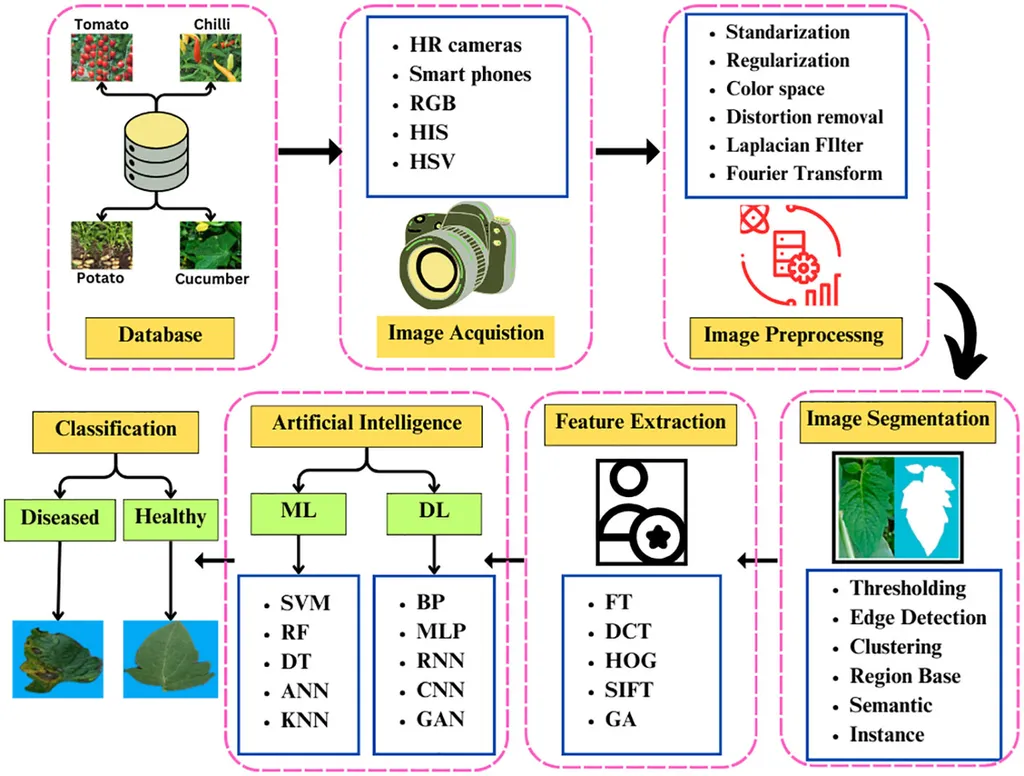In the relentless battle against plant pathogens, scientists have long focused on direct combat strategies, such as using microbes to outcompete or kill harmful fungi. However, a recent study published in *Cell Reports* reveals a more nuanced approach to disease management, one that could reshape how we think about agricultural sustainability. The research, led by Linhua Cao of Nanjing Agricultural University, uncovers a fascinating ecological tactic employed by a beneficial fungus, *Trichoderma harzianum* (Th), to neutralize a key toxin produced by the notorious plant pathogen *Fusarium verticillioides* (Fv).
Fusarium wilt, caused by *Fusarium* species, is a devastating soil-borne disease that affects a wide range of crops, including maize, tomato, and wheat. The pathogen produces a toxin called fusaric acid (FSA), which plays a crucial role in its virulence. Cao and his team discovered that *Trichoderma harzianum* can detoxify FSA using an enzyme called salicylate hydroxylase, converting it into a nearly non-toxic metabolite called 10OH-FSA. This detoxification process not only neutralizes the pathogenicity of *Fusarium verticillioides* but also mediates complex interspecies interactions that contribute to disease suppression.
“This is a game-changer in how we approach disease management,” says Cao. “By understanding and harnessing this detoxification mechanism, we can develop more sustainable and effective strategies to control Fusarium wilt and potentially other fungal diseases.”
The implications for the agriculture sector are substantial. Currently, farmers rely heavily on chemical fungicides to manage Fusarium wilt, which can be costly, environmentally damaging, and sometimes ineffective due to the development of resistance in pathogens. The discovery of this detoxification mechanism opens the door to more targeted and eco-friendly biocontrol strategies. For instance, farmers could inoculate their fields with *Trichoderma harzianum* or other microbes capable of detoxifying FSA, reducing the need for chemical interventions.
Moreover, the study found that *Trichoderma harzianum*-induced FSA detoxification activity in the rhizosphere (the root zone of plants) could stimulate the growth of other FSA-detoxifying microbes. This ecological cross-talk amplifies disease suppression, creating a more resilient and self-sustaining agricultural ecosystem. “This research highlights the importance of understanding the complex interactions between microbes in the soil,” says Cao. “By fostering beneficial microbial communities, we can enhance plant health and productivity in a more sustainable way.”
The broad applicability of FSA detoxification in controlling different Fusarium diseases across various crops is particularly exciting. It suggests that this mechanism could be harnessed to develop widely applicable biocontrol agents, reducing the need for crop-specific solutions. This could lead to significant cost savings for farmers and a more streamlined approach to disease management.
Looking ahead, this research could pave the way for innovative agricultural technologies and practices. For instance, scientists could engineer crops to produce salicylate hydroxylase or other detoxifying enzymes, enhancing their resistance to Fusarium wilt and other fungal diseases. Additionally, this work underscores the need for further research into the ecological roles of beneficial microbes and their potential applications in agriculture.
As the global population grows and the pressures on agricultural systems intensify, sustainable disease management strategies will become increasingly important. The discovery of FSA detoxification as a means of interspecies interaction and disease suppression offers a promising avenue for developing such strategies. By embracing and building upon this research, the agriculture sector can move towards a more sustainable and resilient future.
The study, led by Linhua Cao of the Key Lab of Organic-Based Fertilizers of China and Jiangsu Provincial Key Lab for Solid Organic Waste Utilization at Nanjing Agricultural University, was published in *Cell Reports*.

